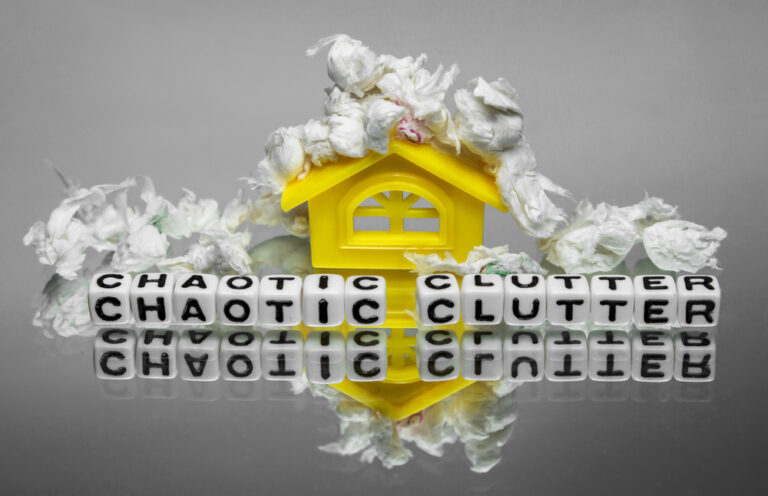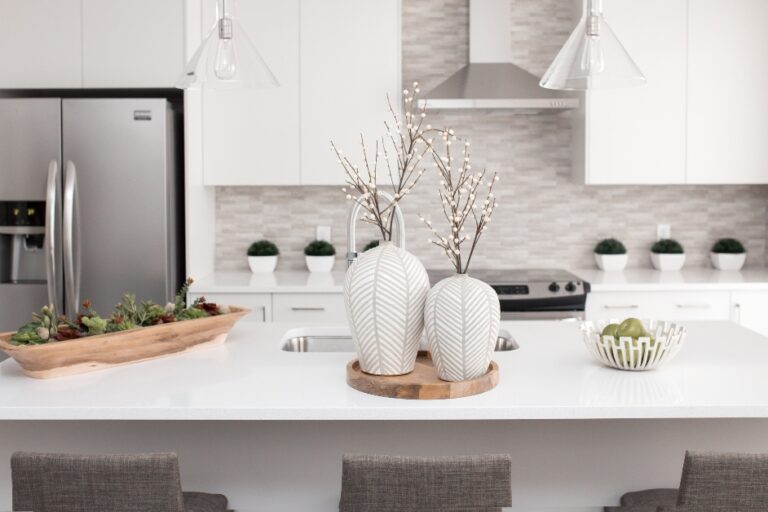How To Set “Achievable” Decluttering Goals
When it comes to decluttering, do you tend to quit halfway? Or does the decluttering process takes too long because you are so inefficient and don’t know where to focus on?
If so, having achievable decluttering goals might be the first step to solve your problems.
In this article, I’ll share some tips on setting decluttering goals that you can actually achieve.
First, I will explain why setting goals is crucial before diving into decluttering. Then, we’ll explore practical advice for establishing your decluttering goals.
In addition to having a big goal for your big decluttering project, it’s crucial to set a S.M.A.R.T. goal for each of your decluttering sessions. We’ll cover that too.
Let’s go!
Why setting a Decluttering Goal is Important
You might be wondering, I already know that I need to declutter. Isn’t it good enough?
Well, you are more likely to succeed if you know more about what you want to accomplish with the decluttering project. Here is what I mean:
1. You are less likely to give up when facing challenges
Imagine you’re in the middle of decluttering your closet.
Feeling overwhelmed is normal when you see piles of clothes, each piece waiting for your decision. Without an achievable goal, you might talk yourself out of the task and give up halfway.
However, with a clear goal, such as “I want a closet with only clothes I love and wear,” you have a purpose to stay in the process. When challenges come up, you’ll be motivated to find ways to overcome them.
2. You will stay focused, knowing what to keep/declutter

Decluttering is not just physical work. It also involves making tons of decisions on what to keep and what to get rid of. Decision fatigue happens when your mind is exhausted and overwhelmed from making decluttering decisions.
However, if you have a clear goal like, “I am going to have a wardrobe of clothes that are in my current size.” you can combat decision fatigue and focus on the task.
This clarity will also help you with quicker decision-making, and reduce uncertainty or doubt throughout the process.
3. You’ll Have A Finish Line
I think the best part of having an achievable decluttering goal is that you’ll know when to say ‘mission accomplished.’
Without a goal, there’s a risk of endlessly decluttering without a clear endpoint. There’s always a sense of ‘I have not done enough,’ which makes you feel bad about yourself and overlook the effort you have put in.
If you are someone who tends to be hard on yourself, you will appreciate having a decluttering goal that is achievable.
Tips on Setting Decluttering Goals
Now that you understand why decluttering goals matter, let’s find out how to set them effectively:
1. Think about your WHY
Why do you want to declutter your home?
Do you hope to save time getting dressed in the morning by clearing out unwanted clothes? Are you tired of constantly picking up your child’s toys? Or do you look forward to enjoying cooking and exploring recipes in your clutter-free kitchen?
Take a moment to visualize your space after decluttering. Think about the benefits you’ll experience once you’ve finished decluttering, and be sure to write them down. It’ll help you stay motivated.
2. Be realistic
It’s easy to get inspired by glossy magazine spreads or Instagram posts showcasing perfectly organized and decorated spaces. However, your goals should be realistic and tailored to your own needs.
Don’t aim for a picture-perfect home – focus on what works for you.
3. Understand your goal only matters to you, not others
Your decluttering goals are deeply personal and should reflect what truly matters to you, rather than being influenced by external opinions.
For instance, if your aim is to declutter 20% of your closet, it’s your goal. Don’t let external comments, such as your spouse suggesting decluttering more (or less), affect your decisions.
Stay true to what aligns with your priorities and needs.
4. Find a decluttering method that works for you

There are various decluttering methods and rules available. Find the one that you are most likely to follow through with to ensure success.
Do you want to dive in with a quick, intense 3-day project to enjoy a clutter-free space sooner? Or do you like the idea of taking it slow, decluttering a few items each day, which helps form a habit to increase your awareness of your belongings?
No matter which method you pick, consistency is key. Sticking with your chosen approach ensures you make progress in simplifying and decluttering your space.
5. Set timescales for your decluttering goal
The key is to make sure it is realistic and achievable. Avoid rushing through the process, you don’t want to be too ruthless and regret your decisions later.
Here is an example. If you’re decluttering your kitchen, you could set a goal like “I’ll complete my kitchen declutter within a month, working on it for a few hours every weekend.”
6. revisit your goal often
It’s important to check your decluttering goal often because it keeps you motivated and on the right path.
There might be times when decluttering becomes challenging, and you feel like giving up. During these moments, go back to your initial goal and remind yourself why you started.
In addition, your goals may shift a little as you go along, and checking them lets you adjust your plans to match your current needs. This way, you can stay focused and keep making progress toward a clutter-free, organized space.
Tips on Setting S.M.A.R.T. Goals for Each Decluttering Session

In addition to your overarching decluttering goals, it’s essential to set specific goals for each decluttering session. I use the S.M.A.R.T. method to set these session goals:
1. Specific
Clearly define what you aim to accomplish during the session. For example, “Today, I’ll declutter my bookshelf and organize it by genre.”
2. Measurable
Make sure your goals are quantifiable so that you can track your progress. For instance, “I want to declutter and donate at least five items from my closet today.”
3. Achievable
Set goals that are realistic and attainable within the timeframe of your session. Don’t overwhelm yourself. “Sorting through all my paperwork and organizing it in one hour” may not be achievable, so break it into smaller tasks.
4. Relevant
Ensure that your session goals align with your overall decluttering objectives. If you’re working on your bedroom, set goals related to that space, such as “I’ll declutter my nightstand and organize my bedside essentials.”
5. Time-bound
Specify how long your decluttering session will last. This helps you manage your time effectively. “I’ll spend 45 minutes decluttering my desk and filing away important documents.”
Conclusion
Setting decluttering goals is a great start to create a clutter-free, organized space.
The 3 reasons why it is important to set a decluttering goal are:
- You are less likely to give up when facing challenges.
- You will stay focused, knowing what to keep/declutter.
- You will know your finish line and when to stop.
There are 6 tips on how to set your decluttering goals:
- Think about your WHY.
- Be realistic.
- Understand that your goal only matters to you.
- Set timescales for your decluttering goal.
- Find a method that works for you.
- Revisit your goal often.
In addition, make sure to set a goal for each of your decluttering sessions. This way you can be more focused.
I hope this article is helpful to you!






